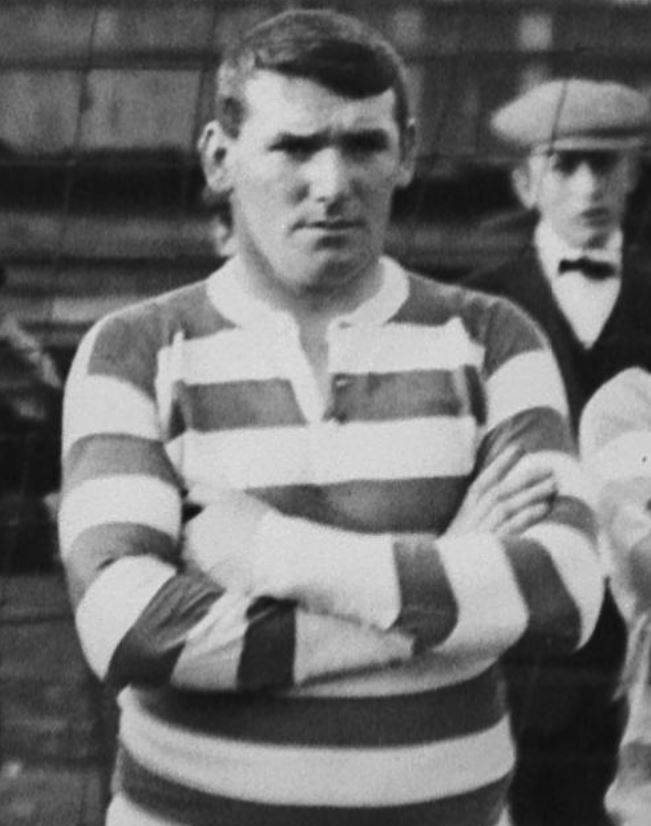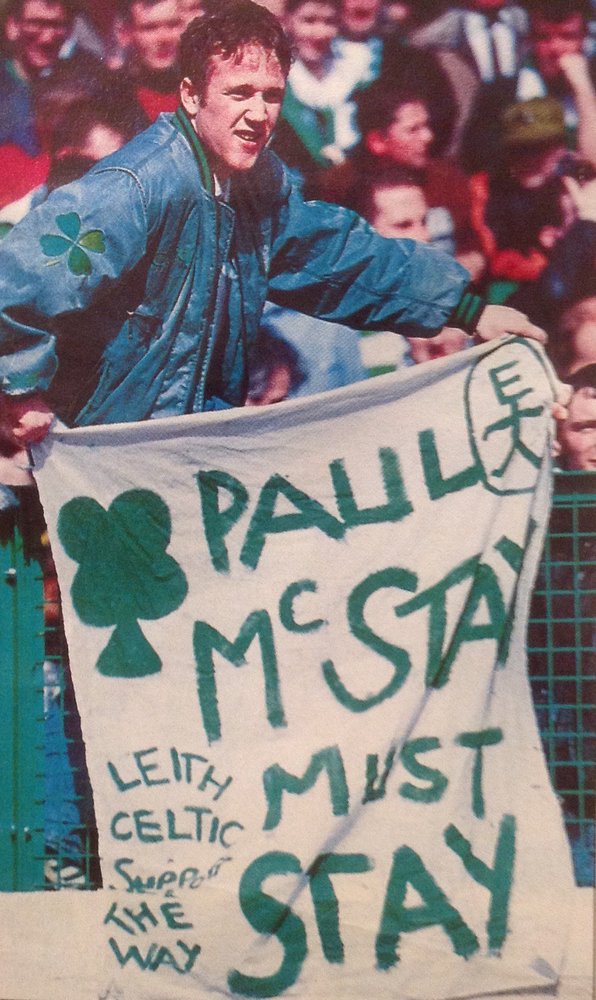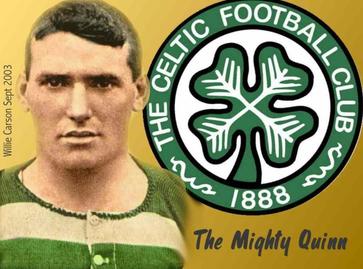NO-ONE dominated conversation in Edwardian Scotland more than Jimmy Quinn, the man who in so many ways typified the Celtic team of that era with his legendary goalscoring. He was a very shy man, however, with no great desire to be anything other than Jimmy Quinn of Celtic.
His first few years with the club were not happy ones – he had been involved, for example, in the Scottish Cup final defeats of 1901 and 1902, and more than once, he expressed a desire to return to the mines of Croy, but Maley persuaded him otherwise.

For a long time no-one seemed able to decide whether his best position was on the left wing or in the centre, but it was as centre forward that he scored his two famous hat-tricks against Rangers, one in the Coronation Cup of 1902 and the other more famous one in the Scottish Cup Final of 1904 after Celtic had been two down.
He was no shrinking violet on the field and twice, in 1905 and 1907, earned lengthy suspensions for being ordered off in games against Rangers. In both cases there was an element of injustice, but Jimmy fought back and answered all his critics by performances on the field, scoring legendary goals like the one against Kilmarnock on Christmas Day 1909, or the Glasgow Cup Final of 1909 when four Rangers players knocked him to the ground, but he still managed to score!

Many of his goals were scored through the now illegal “shoulder-charging” of opponents and goalkeepers in particular, and for this he was well equipped with his “bison” shoulders, but he was also speedy, distributed the ball well, could head the ball and had a devastating shot, making full use of the excellent service of Somers, McMenemy and the “Holy Trinity” of Young, Loney and Hay.
He was capped eleven times for Scotland, his most famous appearances being the time in Dublin in 1908 when he scored four goals and temporarily replaced Charles Stewart Parnell as “the uncrowned king of Ireland”, and then in 1910 when he masterminded Scotland to their 2-0 win over England at Hampden and earned the accolade of the English Press as being “the best in Britain”.
Music hall audiences in Glasgow and Edinburgh now sang “Jimmy Quinn” instead of “Clementine”
as their darling!
Increasingly injury prone in later years, Jimmy played his last game for Celtic in 1915 before retiring to work in the mines in his native Croy, the village that he has immortalised, emerging every Saturday to watch his beloved Celtic until his death in 1945. He would be frequently seen with his clay pipe and amazed everyone by “looking just like an ordinary man”.
David Potter

ALSO FROM DAVID POTTER ON THE CELTIC STAR…

Celtic’s McStay Dynasty…see HERE. And check our home page for David’s Seven Magnificently Random Celtic Stories that have been running on The Celtic Star all week, absolutely outstanding.



